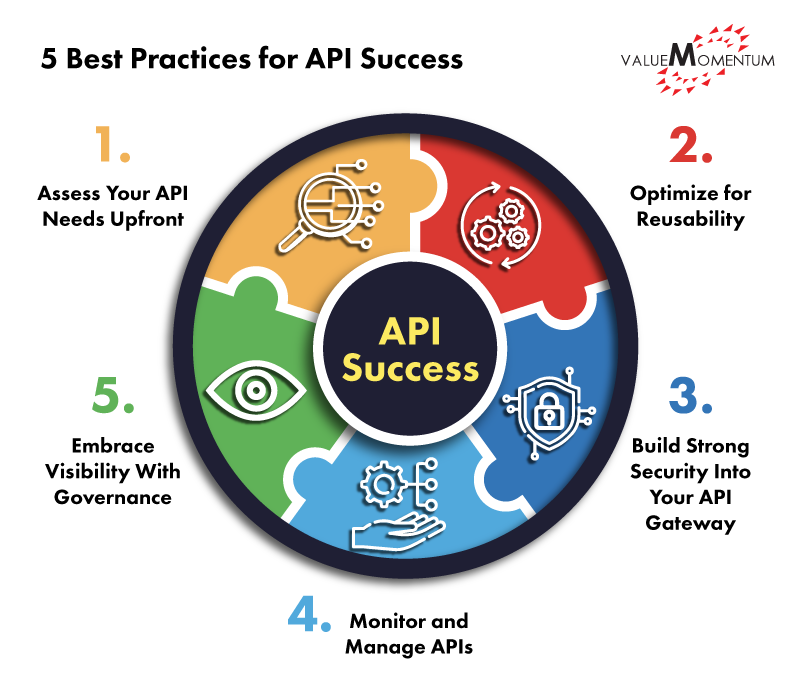To grow in the digital age, businesses need to deliver a responsive and personalized experience that engage customers across all channels. As customer demands and market needs are always changing, the flexibility to adapt is key to maintain a competitive advantage.
The fastest-growing companies gain 40% more revenue from personalization, according to McKinsey. In fact, 71% of consumers say they expect it, and 76% say not getting the level of personalization they seek is frustrating.
The ease of finding just what they want on Netflix and Amazon has reshaped consumer expectations and what they now demand from financial services and insurance firms. To earn the loyalty of these customers that translates into increase lifetime value (LTV), banks and insurers have to offer a unique experience that delight customers.
Application programming interfaces (APIs) enable them to do that.
As APIs decouple functionality and experience, they empower organizations to focus on building their unique differentiator to sell their products and services. That’s why it’s crucial for leaders in financial services and insurance to adopt an API strategy that addresses the entire API life cycle—from creation to security, to analysis, to management.
The fastest way to get up to speed on and implement a successful API initiative is to learn from the experiences of industry peers and apply best practices.
Best practices to overcome API challenges
Based on our years of experience helping financial services and insurer clients develop APIs and implement successful API strategies, ValueMomentum has identified 5 API best practices to build an API architecture of the future:

- Assess your API needs upfront
The first step for API best practices is setting up a map that reveals what’s already in place and what needs to be built. That takes collaboration with the relevant business leaders in the firm to achieve alignment between the API and the vital business functions it performs.Skipping that step reduces the ROI you can achieve from a solid API strategy. This is the technology equivalent of measuring twice and cutting once – a way to ensure that the API strategy works the first time. - Optimize for reusability
The most valuable APIs are the ones that are used the most. Reusability mainly refers to the process and system APIs, not experience APIs. Nearly half (47%) of IT leaders say their internal components are made for reuse, reports MuleSoft.To Identify the most valuable APIs, it’s necessary to examine their processes and break them down into functional units. On that basis, you can derive the blocks that work together to orchestrate a transactional process. A highly reusable API can fulfill a particular business function or process across multiple channels.Keeping overall enterprise goals in mind, you should aim to prioritize APIs strategically. Even more importantly, you should design APIs with this widespread usability in mind. - Build strong security into your API gateway While an API gateway is not essential, it is recommended, especially when APIs are exposed to external systems or used to leverage the services provided by third parties. An API gateway acts as an entry point to route services, aggregate results, and verify and track who or what is calling different channels.Building strong security in this gateway is essential because a data breach could effectively ruin a company. For that reason, it is critical to protect data and develop safeguards against cyberattacks.
- Monitor and manage APIs To ensure that APIs bring the desired business value, you need to define success metrics in advance to assess and monitor performance. Monitoring APIs extends to usage, performance, and impact, as well as digital engagement across the network, application, and infrastructure. External data feeds from the source across different endpoints also need to be considered.
- Embrace visibility with governance When all parts of the business are not aligned, you risk both the loss of functionality and of trust. That’s why, in addition to a clear communication plan that builds enterprise-wide transparency, it is critical to govern the creation, use, and management of APIs.To reduce confusion and avert duplicated efforts by compiling, APIs should be labeled in layman’s terms based on their business service. They should also be published in a repository/ library that is easily accessible and includes information on how to utilize the API. Creating an API Center of Excellence to manage governance as the API initiative expands is also helpful.
Transforming processes and customer experience with APIs
These best practices are already being applied by some financial services and insurance firms as they adopt APIs to create greater efficiencies and reduce friction for their customers. Here are some examples:
Reusable APIs for faster quotes and development time
A large insurer in the UK wanted to become a market leader in digital insurance. There were three components to that aim:
- Enabling an easy process for online product purchases
- Improving partnerships with broker, intermediaries, and affinity partners
- Increasing operation efficiency and reducing costs
The CTO knew that APIs built for flexibility and reuse were key to achieving those goals and turned to MuleSoft’s solutions to replace its manual process for property insurance quotes that entailed numerous applications and answers to hundreds of questions with an automated one.
The new home quote platform uses APIs to draw on information from hundreds of data points coming from sources like Experian and WorldPay. As a result, insurance advisers or customers now just have to answer five questions to get an accurate quote in 90 seconds.
The speedy and painless quote process generated a lot more demand for the insurer, doubling its sales opportunities. It was able to keep up because The DevOps team reused assets to generate an external set of APIs that offer the service to partners, reducing onboarding and development time.
It found it could build and deliver on projects 2.5x faster than before with a 15% reduction in maintenance costs, thanks to the capability of reusing 60-70% of their APIs.
APIs enable fast loan approvals
For an Australian fintech company that launched in 2017, the objective was to gain a competitive advantage by delivering a better home loan process. APIs made that possible. It was able to get the application process down from 22 days to just 22 minutes.
APIs made it possible to unlock data from loan applicants’ e-form application, as well as 21 other systems. That eliminated a lot of the information that customers previously had to provide and automated validations tasks. For example, an automated valuation model offers the property value based only on the address by drawing on a property database.
The API-enabled process was so popular with customers that the company took in over two billion dollars in loan application. Due to the mass-appeal of the solution, the company made it available as a white-labeled product for other financial institutions.
The API journey leads to LTV
By applying these 5 best practices for financial services and insurance firms, your organization will avoid many of the pitfalls that can trip up a business on an API integration journey. It also will be equipped to leverage the potential of APIs to offer the differentiated digital experiences your customers crave. The results are not just greater engagement in the short term but a higher LTV in the long term.
If you are a CIO or CTO looking to accelerate your API adoption efforts, here are six key questions and answers that can help launch you on your journey.
To find out more about how APIs are driving digital transformation in financial services, insurance, and beyond, check out APIs – Key Enablers of Digital Transformation in Insurance and Open APIs: A New Frontier.

